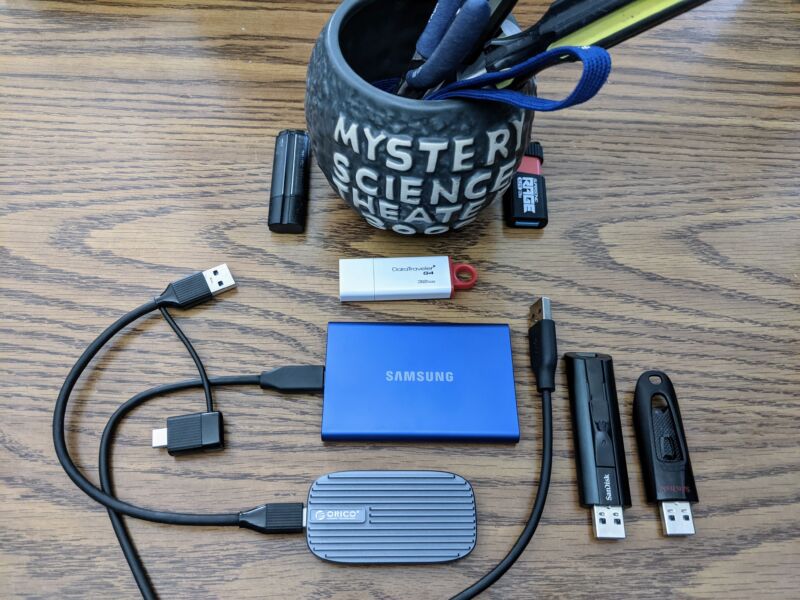
Enlarge / Both portable SSDs were great—as were the SanDisk thumb drives, each in their own price and performance class. The other thumb drives… not so much. (credit: Jim Salter)
If you shop for thumb drives on Amazon, you’ll discover one thing very quickly—they pretty much all have 4.5+ star overall reviews, but the top reviews all tend to be very, very negative. This isn’t much help to somebody trying to look for the best gear to buy, of course—and neither are the scads of “review guides” scattered across the net, which seem to take manufacturer numbers based on raw interface speeds at face value.
This is a problem that wound up biting me pretty hard personally since becoming Ars Technica’s newest technology reporter. Properly testing a laptop means loading about 13GiB worth of benchmark utilities on it. This is normally something I’d do across the network… but new laptops tend not to have Ethernet jacks in the first place. That generally leaves either Wi-Fi or thumb drives—and I don’t want to screw up my family’s Wi-Fi experience while I’m testing.
Today, we’re going to do a little real-world demonstration to help guide you in your portable storage purchases. We’re not looking for super high-end hard drive replacements, here—only those under $100 (in some cases, under $10!) and hopefully those with effective sneakernet tools.





